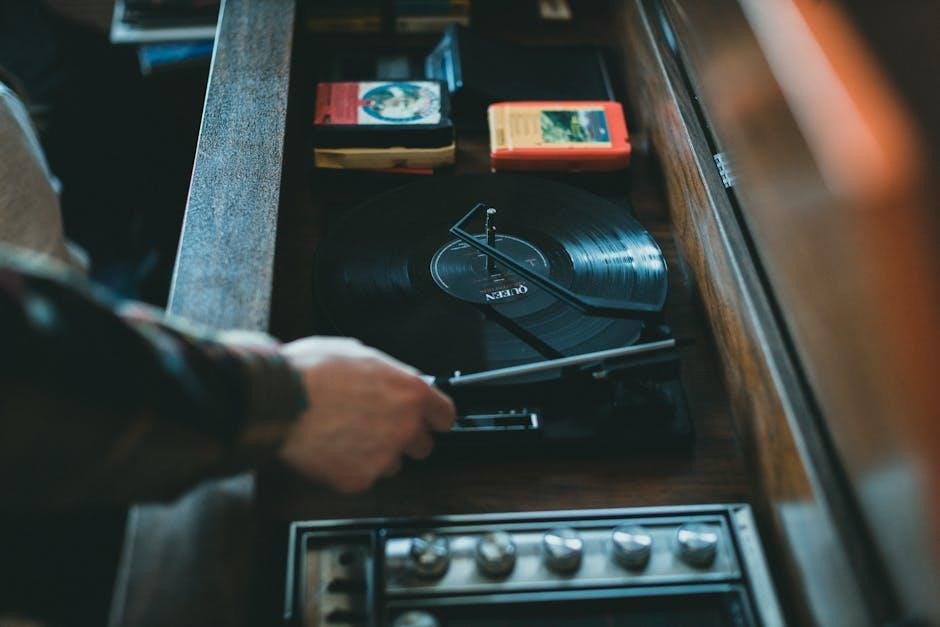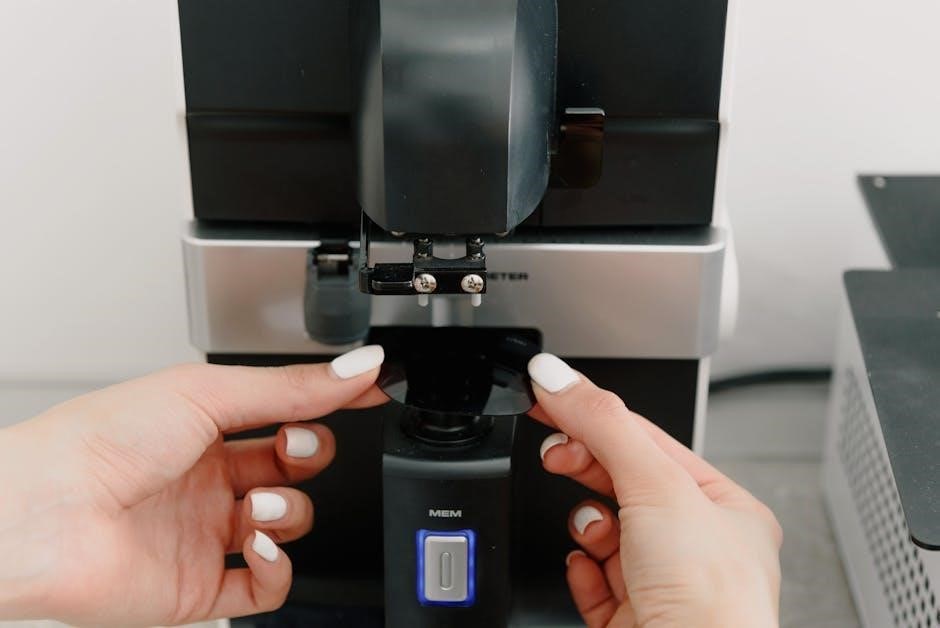automatic vs manual turntable
Turntables are devices that play records, with manual and automatic options available, each having unique features and functionalities, including tonearm control and audio quality, suitable for different user needs and preferences always.
Overview of Turntable Types
There are several types of turntables available, including manual, semi-automatic, and fully automatic models. Each type has its own unique characteristics and features, such as tonearm control and audio quality. Manual turntables require the user to manually place the needle on the record and lift it off when the record is finished playing. Semi-automatic turntables lift the needle off the record at the end of play, but require the user to place the needle on the record. Fully automatic turntables, on the other hand, can play records from start to finish without any user intervention. The choice of turntable type depends on the user’s preferences and needs, with some prioritizing convenience and others prioritizing audio quality and control. The different types of turntables cater to various users, from casual listeners to audiophiles, and offer a range of options for playing records. Turntable types vary in terms of functionality and features.

Manual Turntables
Manual turntables require user intervention, offering control and audio quality, with features like adjustable tonearms and counterweights always in place for optimal performance and sound.
Advantages of Manual Turntables
Manual turntables have several advantages, including better sound quality and more control over the playback process. The user has the ability to manually place the needle on the record, which can help to reduce wear and tear on the stylus and the record itself. Additionally, manual turntables often have adjustable tonearms and counterweights, which can be adjusted to optimize the sound quality. This level of control and customization is not typically found on automatic turntables, making manual turntables a popular choice among audiophiles. Furthermore, manual turntables tend to be more durable and less prone to mechanical failure than automatic turntables, which can be beneficial for those who plan to use their turntable extensively. Overall, the advantages of manual turntables make them a great option for those who value sound quality and control. They offer a unique listening experience that is hard to replicate with automatic turntables.

Automatic Turntables
Automatic turntables offer convenience and ease of use, with features like automatic tonearm lifting and lowering, always providing a simple listening experience with minimal user intervention required always.
Disadvantages of Automatic Turntables
Automatic turntables have several disadvantages, including higher cost and potential for decreased audio quality due to the mechanical components involved in the automatic process. The moving parts can be of a fairly basic quality, which may lead to greater wear on records. Additionally, the stylus on automatic turntables can be larger, causing more damage to the records over time. The automatic mechanism can also introduce noise and vibrations, affecting the overall sound quality. Furthermore, the convenience of automatic turntables can lead to careless handling, especially among inexperienced users, which can result in damage to the records and the turntable itself. Overall, while automatic turntables offer ease of use, they may not be the best choice for audiophiles or those who value high-quality sound and want to preserve their records. The trade-off between convenience and audio quality is an important consideration when deciding between automatic and manual turntables.

Comparison of Manual and Automatic Turntables
Manual and automatic turntables differ significantly in terms of functionality and user experience always requiring different handling.
Difference in Audio Quality
The difference in audio quality between manual and automatic turntables is a significant consideration for music enthusiasts. Manual turntables are often praised for their warm and rich sound, which is attributed to the direct connection between the tonearm and the record. In contrast, automatic turntables can introduce additional noise and distortion due to the mechanical components involved in the automatic playback process. The quality of the stylus and cartridge also plays a crucial role in determining the audio quality, with manual turntables often featuring higher-quality components. Furthermore, the manual process of placing the needle on the record allows for more precise control over the playback, resulting in a more nuanced and detailed sound. Overall, the difference in audio quality between manual and automatic turntables is a key factor to consider when choosing a turntable, with manual turntables generally offering superior sound quality. The audio quality is also dependent on the turntable’s build quality and user handling.

Factors to Consider When Choosing a Turntable
Considering factors like budget, space, and personal preference is essential when choosing a turntable, including manual or automatic options, to ensure the best listening experience always available online.
Importance of Build Quality and User Handling
The build quality of a turntable is crucial in determining its overall performance and longevity, with factors such as tonearm material and bearing quality playing a significant role; User handling is also essential, as improper handling can lead to damage to the turntable and records. A well-built turntable with a sturdy tonearm and high-quality bearings can provide a smooth and stable playback experience, while a poorly built turntable can result in vibrations and distortions. Furthermore, users should be aware of how to properly handle and maintain their turntable, including cleaning and calibration, to ensure optimal performance. A turntable with a good build quality and proper user handling can provide a enjoyable listening experience, with clear and detailed sound reproduction. Additionally, a turntable with a durable build can withstand regular use and last for many years, making it a worthwhile investment for music enthusiasts. Proper care and handling can also help to prevent damage to the records.